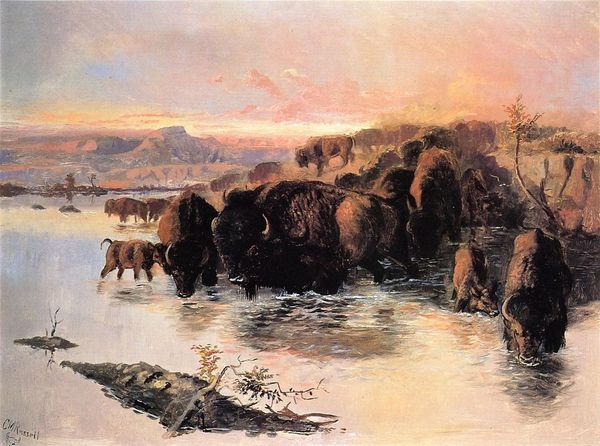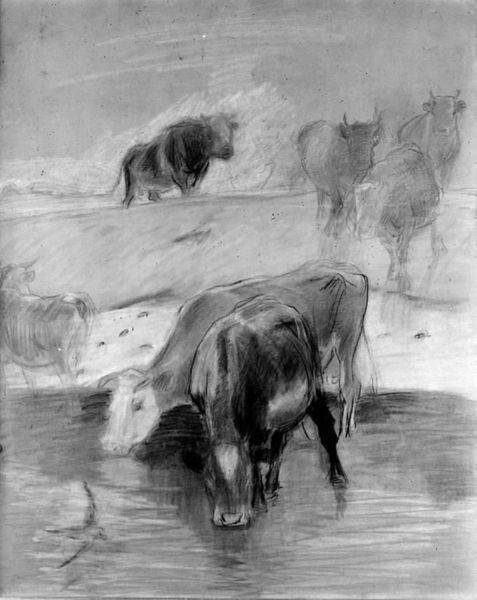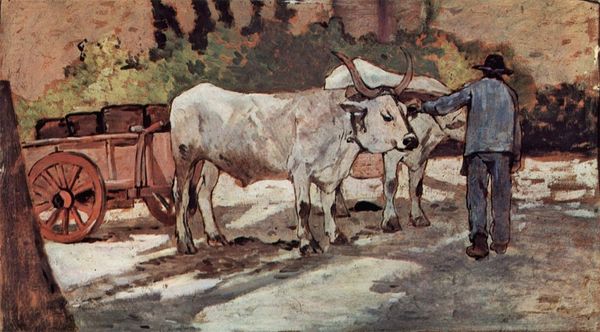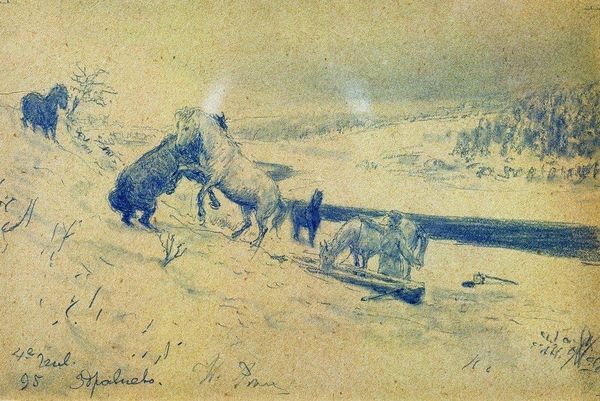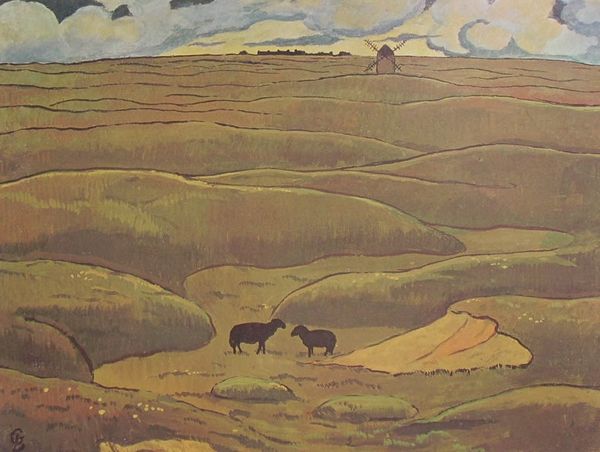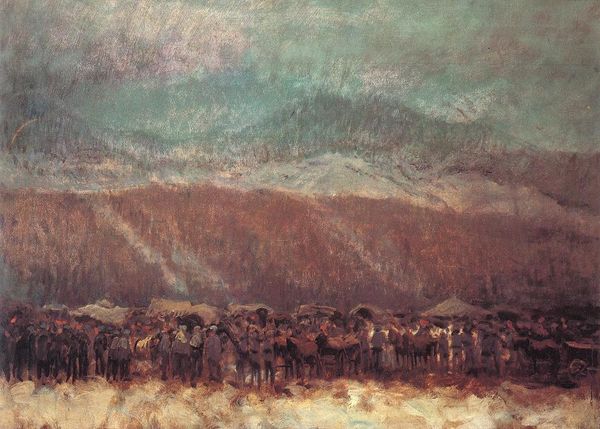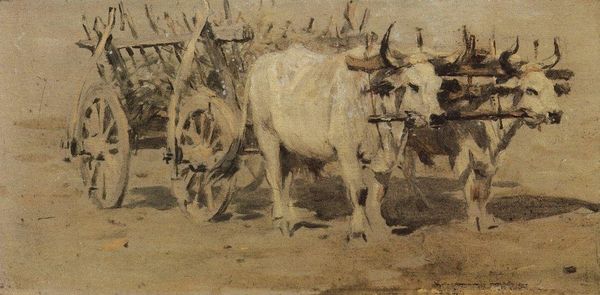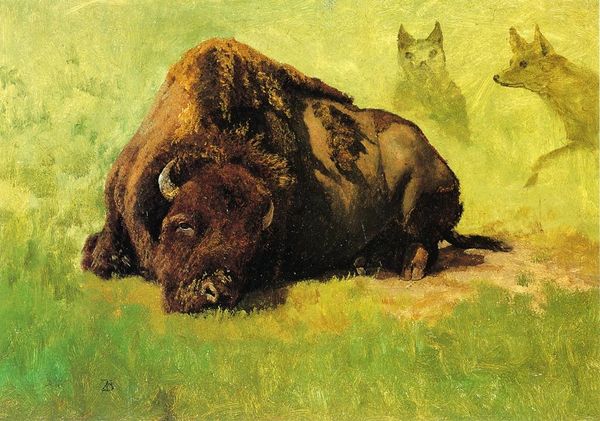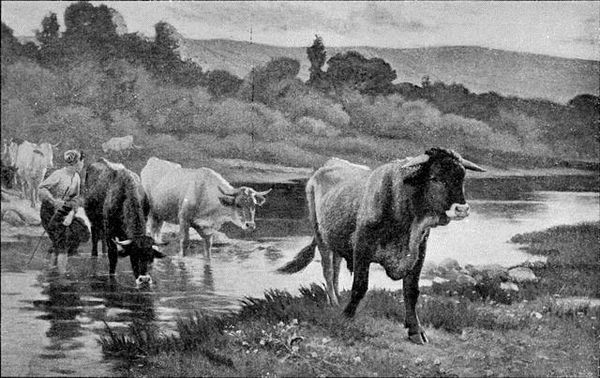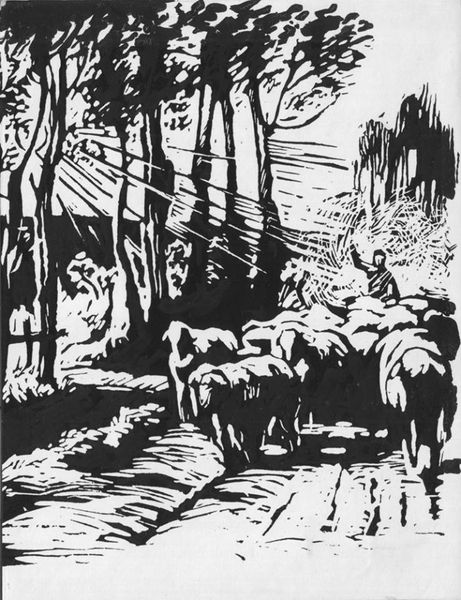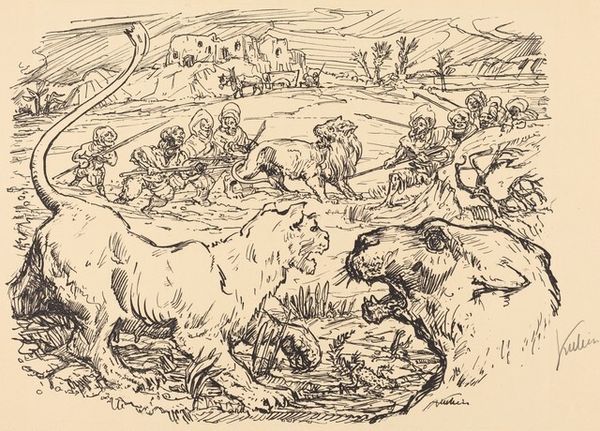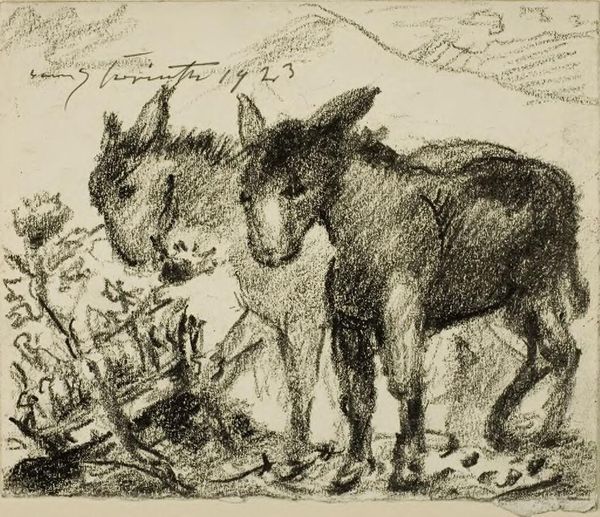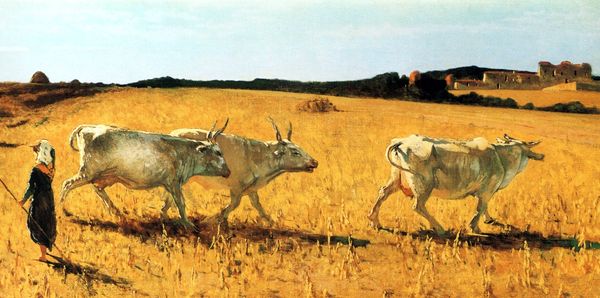
painting, oil-paint
#
painting
#
oil-paint
#
asian-art
#
landscape
#
oil painting
#
orientalism
#
genre-painting
#
realism
Copyright: Public domain
Curator: Oh, there's something really evocative about this piece. At first glance, I feel this overwhelming sense of earthy peace and hard work under a muted sky. Editor: What strikes you about it? Let’s delve into Romualdo Locatelli’s "Plowing in Java," crafted in 1939. It's an oil painting showing, as you say, people diligently at work in a rice paddy, typical of the genre painting Locatelli produced during his time in Asia. Curator: It's almost like watching the day unfold through layers of mist, the colors feel so...deliberately quiet. There's such a deep human connection visible here, even though we only get a glimpse of faces and forms. And these Water buffalo, they are beautiful creatures that I could just feel and smell on the canvas. Editor: Locatelli had a keen eye for capturing scenes of labor and everyday life in Southeast Asia during the colonial era, wouldn't you agree? Think about how that shapes our interpretation: images like this were consumed back in Europe, contributing to both a fascination and perhaps a romanticized, sometimes problematic, vision of these distant lands and people. The question for a modern museum audience is how this piece could prompt considerations around colonialism and cultural representation. Curator: Absolutely, that tension is vital. What appears gentle on the surface holds so many potential threads. It makes you ponder about the human condition then and now. I am not quite sure what to think and to feel at the moment but these simple strokes transmit emotions from past to the present... Editor: Precisely. What resonates for me is how Locatelli is documenting rural work and life during the end of a period of colonialism, depicting realities which might seem very distant now but remain woven into political relationships of the present. In the end, what do we take away from it all? Curator: An invitation, maybe. To really look, not just with our eyes, but with our hearts and minds. The artist has succeeded, through the artwork, to bring me a lot to think about, making a statement with a scene, colors and forms which appear quiet in principle. It's simply magical! Editor: And for me, this work is a window, a portal even. It challenges us to examine not just the art itself but also the power structures and historical context from which it emerged.
Comments
No comments
Be the first to comment and join the conversation on the ultimate creative platform.
